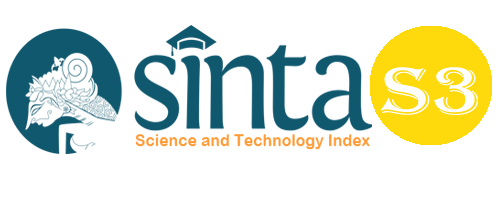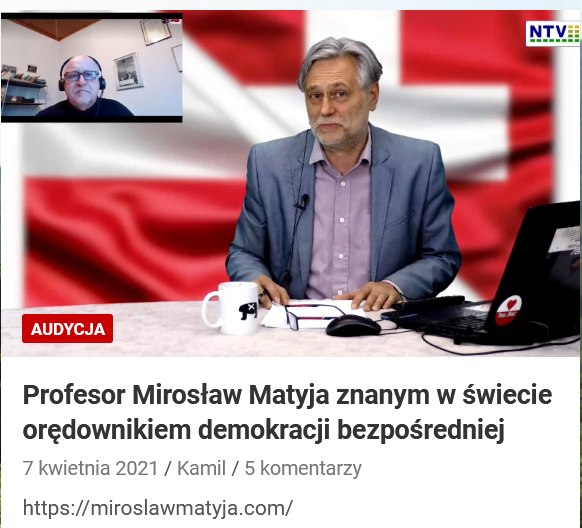Capital Factors of Rubella Vaccination Behaviour among the Parents in Bangladesh: A PLS-SEM Analysis
Abstract
Keywords
Full Text:
PDFReferences
Azad, A. K. 2012. ‘Rubella Virus and Congenital Birth Defects in Bangladesh: A Study of
Social Determinants’. Journal of Sociology. 4(1):113-126.
Azad, A. K. 2014. ‘Measles Mumps and Rubella Vaccination Coverage among the Private
University Students of Bangladesh: A Nonfunctional Health Belief Model’. Society &
Change. VIII (1): 27-47.
Chou, S.Y, J.T. Liu, M. Grossman and T.J. Joyce. 2007. ‘Parental Education and Child
Health: Evidence from A Natural Experiment in Taiwan’. National Bureau of
Economic Research. Working Paper, No. 13466, NBER, Cambridge, Mass.
Desai, S. and S. Alva. 1998. ‘Maternal Education and Child Health: Is There a Strong Causal
Relationship?’. Demography. 35(1):71-81.
Directorate General of Health Services (DGHS). 2013. ‘EPI Surveillance Bulletin’. Available
from: http://www.dghs.gov.bd/images/docs/EPI/Bulletin%20for%20EPI%20Web%20Site/2013/EPI%20Surveillance%20Bulletin-Issue%2001-2013.pdf. Accessed 17 Jan 2015.
Frost, M.B, R. Forste and D.W. Haas. 2005. ‘Maternal Education and Child Nutritional Status
in Bolivia: Finding the Links’. Social Science and Medicine. 60(2):395-407.
GAVI Alliance. 2013. ‘Over 700 million children in 49 countries to be protected against
measles and rubella’. Available from:
http://www.gavialliance.org/library/news/press- releases/2013/over-700-million-children-in-49-countries-to-be-protected-against-measles-and- rubella/. Accessed 14 July 2013.
Gregg, N. M. 1941. ‘Congenital Cataract Following German Measles in the Mother’. Trans
Am Ophthalmol Soc. 3:35
Grossman, m. and R. Kaestner. 1997. ‘Effects of Education on Health’, in J.R. Behrman and
N. Stacey (eds.), The Social Benefits of Education. The University of Michigan Press:
Ann Arbor.
Hair, Joseph F., William C. Black, Barry J Babin, and Rolph E. Anderson. 2010. Multivariate
Data Analysis. 7th ed. Prentice Hall: Englewood.
Hair, J. F., W. C. Black, B. J. Babin, and R. E. Anderson. 2011. ‘PLS-SEM: Indeed, a Silver
Bullet’. The Journal of Marketing Theory and Practice 19 (2): 139–51.
Hair, J. F., M. Sarstedt, L. Hopkins, and V. Kuppelwieser. 2014. ‘Partial Least Squares
Structural Equation Modeling (PLS-SEM): An Emerging Tool in Business Research’.
European Business Review 26 (2).
Hair, Joseph F., G. Tomas M. Hult, Christian Ringle, and Marko Sarstedt. 2016. A Primer on
Partial Least Squares Structural Equation Modeling (PLS-SEM). 2nd ed. Thousand
Oaks: Sage.
Islam M. K, J. Merlo, I. Kawachi, M. Lindstro, U. G. Gerdtham. 2006. ‘Social Capital and
Health. Does Egalitarianism Matter? A Literature Review’. Int J Equity Health. Vol.
pp. 3. DOI: 10.11 86/1475-9276-5-3.
Kim D, Subramanian S. V., Kawachi I. 2008. ‘Social Capital and Physical Health: A
Systematic Review of the Literature’. In: Kawachi I., S. V. Subramanian, D. Kim, eds.
Social Capital and Health. NY: Springer; pp. 139-90
Lyons, Maureen. 2003. Inside Classrooms: The Teaching and Learning of Mathematics in
Social Context. Dublin: Institute of Public Administration.
Miller, L. A., R. E. Hoffman, A. E. Barón, , et. al. 1994. ‘Risk Factors for Delayed
Immunization against Measles, Mumps, and Rubella in Colorado Two Year Olds’.
Pediatrics. 94: 213–19.
Mosley, W. H. and L.C. Chen. 1984. ‘An Analytical Framework for the Study of Child
Survival in Developing Countries’. Population and Development Review. Vol. 10, pp.
-45.
Nessa, A., S. Khatun, M. N. Islam, and S. Chowdhury. 2000. ‘Bangladesh Medical Research
Council bulletin’. 26(3), 75-81.
Nessa, A., M. N. Islam, S. Tabassum, S. U. Munshi, M. Ahmed, and R. Karim. 2008.
‘Seroprevalence of Rubella among Urban and Rural Bangladeshi Women Emphasizes
the Need for Rubella Vaccination of Pre-pubertal Girls’. Indian Journal of Medical
Microbiology. 26 (1): 94.
Oakes, J. M., and P. H. Rossi. 2003. ‘The Measurement of SES in Health Research: Current
Practice and Steps toward A New Approach’. Social Science & Medicine. 56: 769–
Rahman, M.M., A. M. Khan, M. M. Hafiz, F. M. Ronny, S. Ara, S. K. Chowdhury, S. S.
Nazir, W. I. Khan. 2002. ‘Congenital Hearing Impairment Associated with Rubella:
Lessons from Bangladesh’. Southeast Asian Journal Tropical Medicine and Public
Health. 33(4):811-7
Reef, S.E., Plotkin, S., Cordero, J.F., Katz, M., Cooper, L., Schwartz, B. et. al. 2000
. ‘Preparing for Congenital Syndrome Elimination: Summary of the Workshop on
Congenital Rubella Syndrome Elimination in the United States’. Clin Infect
Dis. 31: 85–95.
Robert, S., & J. S. House. 1996. ‘SES Differentials in Health by Age and Alternative
Indicators of SES’. Journal of Aging and Health. 8:359–388.
Shakotko, R.A., L.N. Edwards and M. Grossman. 1981. ‘An Exploration of the Dynamic
Relationship between Health and Cognitive Development in Adolescence’. In Van der
Gaag, J. and M. Perlman (eds.), ‘Contributions to Economic Analysis: Health,
Economics, and Health Economics’. North Holland: Amsterdam.
Spilerman, S. 2000. ‘Wealth and Stratification Processes’. Annual Review of Sociology.
:497–524.
Strauss, J. et. al. 1989. ‘Serological Survey of Rubella in Yemen in 1985. Journal of Hygiene,
Epidemiology, Microbiology and Immunology, 33: 163—167.
Thomas, D., J. Strauss and M.H. Henriques. 1990. ‘Child Survival, Height for Age and
Household Characteristics in Brazil’. Journal of Developmental Economics. 33:197-
Thomas, D., J. Strauss and M.H. Henriques. 1991. ‘How Does Mother’s Education Affect
Child Height?’. Journal of Human Resources. 26(2):183-211.
Uddin MJ, M. Shamsuzzaman, L. Horng, A. Labrique, L. Vasudevan, K. Zeller, et. al. 2016.
‘Use of Mobile Phones for Improving Vaccination Coverage among Children Living in Rural Hard-to-Reach Areas and Urban Streets of Bangladesh’. Vaccine. 34(2):276-283.
Wen M, K. A. Cagney, N. A. Christakis. 2005. ‘Effect of Specific Aspects of Community
Social Environment on the Mortality of Individuals Diagnosed with Serious Illness’.
Soc Sci Med. 61:1119–34.
Wong, Ken Kwong-Kay. 2013. ‘Partial Least Square Structural Equation Modeling (PLS-
SEM) Techniques Using SmartPLS’. Marketing Bulletin 24: 1–32.
World Health Organization. 2009. ‘Measles vaccines WHO position paper’. Wkly Epidemiol
Rec. 84(35):349–360.
World Health Organization. 2011. ‘Measles vaccines WHO position paper’. Wkly Epidemiol
Rec. 86(29):301–316.
World Health Organization. 2012. ‘Global Measles and Rubella Strategic Plan 2012-2020.
http://apps.who.int/iris/bitstream/10665/44855/1/9789241503396_eng.pdf. Accessed 17 Jan 2015.
World Health Organization. 2012. ‘Bangladesh Introduces New MR and MCV2 Vaccine to
Prevent Measles, Rubella & (Congenital Rubella Syndrome’. EPI Surveillance
bulletin. 15(1):1–5.
DOI: https://doi.org/10.33258/birci.v1i3.30
Article Metrics
Abstract view : 243 timesPDF - 221 times
Refbacks
- There are currently no refbacks.

This work is licensed under a Creative Commons Attribution 4.0 International License.

This work is licensed under a Creative Commons Attribution-ShareAlike 4.0 International License.

_.gif)

















_.gif)



